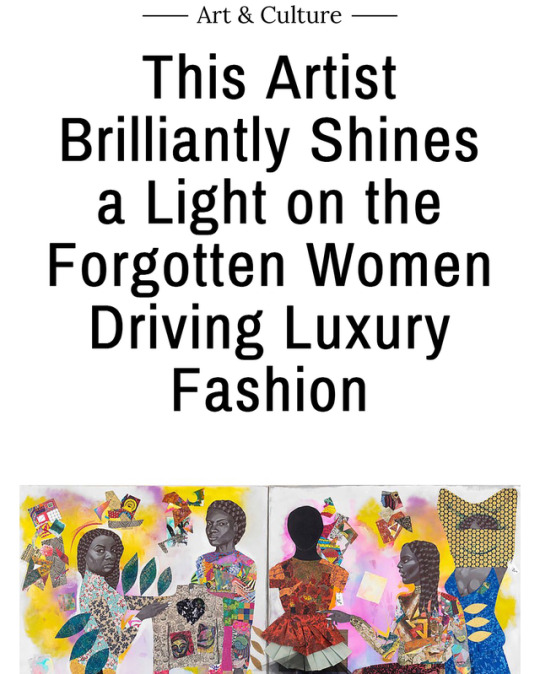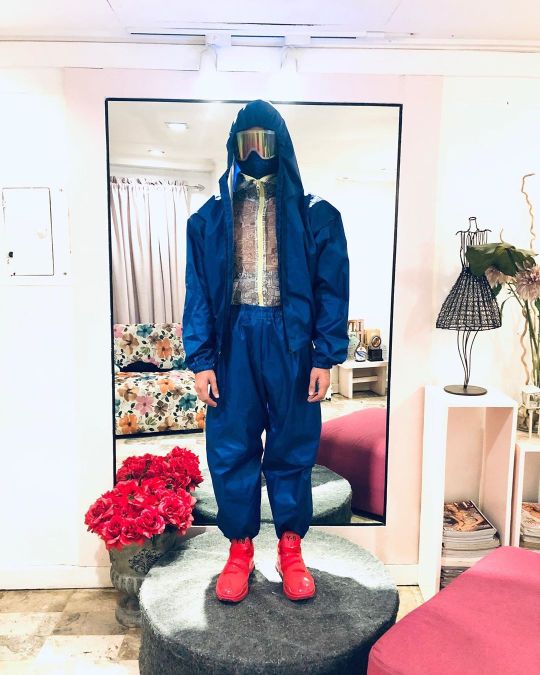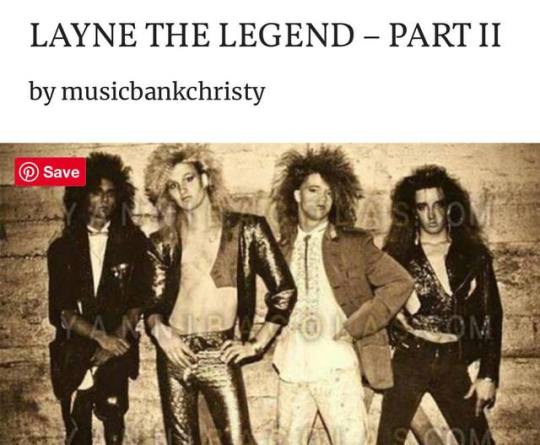#featuredarticle
Explore tagged Tumblr posts
Text
A Tale of Two Tombs: The Church Hill Tunnel and the Convoluted "Creature"
Strolling through the city of Richmond, Virginia means taking a walk through one of the oldest cities in America and being able to visit sights and structures that saw countless chapters of the earliest parts of American history. Visiting Jefferson Park, located on Union Hill, offers visitors walking paths, a playground, and a picturesque view of the modern city skyline. It’s a pleasant scene, and one that does not at all hint at what lay hidden underneath the earth of Jefferson Park.

Skyline of Richmond, Virginia. Image via Bruce Emmerling, CC BY-SA 4.0 https://creativecommons.org/licenses/by-sa/4.0, via Wikimedia Commons
The Church Hill Tunnel of Richmond, Virginia was built with a purpose of advancement, looking to leave behind the aftermath of the Civil War and bring in new progress. Completed in 1872 by the Chesapeake and Ohio Railway (C&O), the railway was built as an extension in order to reach a new coal pier located in the city of Newport News, bringing a new logistical connection to the exportation of coal from the area. The plan sounded good, and upon completion the tunnel was one of the longest in the country at nearly 4,000 feet in length, but the initial victory of completing the tunnel came after multiple problems that should have been seen as a warning.
The first issue with the Church Hill Tunnel was the very earth it was being constructed from. Unlike other tunnels carved through bedrock, Church Hill was created through layers of limestone and soft clay, deeply unstable soil that would shift and swell up when exposed to any moisture and shrink back again when dried. With the volatile soil structure there was no way to ensure the safety of the tunnel and during construction there were multiple instances of portions of it collapsing, taking the lives of the men working inside. Land around the work area began to react to the construction and in one instance the ground gave way, toppling the house of a minister and breaking a gas line. The marvel was also a menace and upon the completion of a new viaduct in 1901 the Church Hill Tunnel was closed and fell into disuse. It should have stayed that way.
While the city of Richmond grew and flourished in the early part of the twentieth century the Church Hill Tunnel lay dormant, looming like a great void out of the earth. That is, until 1925 when after over twenty years of non-use the city decided it was a monster worth bringing back to life.
Given that the tunnel had been left dormant for decades there were extensive repairs that needed to be completed before it could be used once again. These repairs were underway on October 2nd 1925, a cold and rainy day in Richmond that seemed ordinary before the Church Hill Tunnel experienced something that was both unthinkable, but also tragically familiar. The tunnel was bustling with activity and engineer Tom Mason was guiding a train with ten additional flat cars into the west entrance of the tunnel on his first day as an engineer. Then, the bricks began to fall. The collapse of the tunnel was as fast as it was terrible with bricks, debris, and clay falling all around the workers and the train, burying it under the weight of the earth. Electric wires were cut plunging everyone into darkness and some of the trapped men took out their knives and started slashing wildly into the dark, trying to cut through anyone who stood in their way of getting out. Workers scrambled to escape, most miraculously making it to the eastern entrance a mile away and walking from the site with their lives. But others were not as lucky, 190 feet of the tunnel had fallen in on itself and the entire train was buried along with the bodies of Tom Mason and at least two other workers. Fireman Benjamin F. Mosby was hard at work shoveling coal when the locomotive was crushed. He was able to escape but when he staggered out of the east entrance he was horrifically scalded from the steam from the engine and his teeth were broken. He died later that night at Grace Hospital.

The Richmond Times Dispatch reporting on the tunnel collapse.
In the aftermath of the tunnel collapse there were questions, but unfortunately the reason why it happened was known, the tunnel’s history was marred by multiple collapses, and this was not even the first time it claimed human lives. The bigger question now was how to proceed. The body of engineer Mason was able to be recovered but finding the other workers, later identified as Richard Lewis and H. Smith, was impossible. After nine days of efforts to recover their bodies (and after more sections collapsed) it was determined that any further activity in the Church Hill Tunnel was simply too dangerous. The next year the entrances of the tunnel were sealed off, with a giant “1926” inscribed on the mossy, wet stone covering the western entrance. The train and bodies remained entombed inside.
Over the decades since the collapse the tunnel has continued to cause problems, in 1962 another collapse swallowed a house and another worker lost their life to the tunnel. There have been multiple plans to recover the train and the bodies, but the continuing collapses and state of utter disrepair halted further efforts. In 2006 the Virginia Historical Society proposed trying to get into the tunnel once again, but upon drilling a hole in the seal and peering at the inside with a camera it became clear that it would not be possible. The tunnel is filled with water and sand and manipulating it in any way could result in further collapses and severe damage to homes currently standing on Church Hill. Any recovery plans are indefinitely on hold.
Plans for recovery of the train and the bodies of those still entombed inside the Church Hill Tunnel is not the only thing that brings the collapse into present-day conversation. Then there is the vampire.
When twenty-eight-year old Benjamin F. Mosby staggered out of the east end of the tunnel he was the picture of pain and suffering. His teeth were broken, he was bloody, and according to people at the scene his flesh was hanging in ribbons, torn from his body after being blasted by the scalding steam from the locomotive. As the stories of the collapse spread one stated that a “creature” covered in blood and with a mouth of sharp teeth ran from the tunnel, eventually making it to the nearby Hollywood Cemetery where it disappeared into the mausoleum of W.W. Pool, a striking structure with a metal gate and an inscription only reading “W.W. Pool 1913.”

Article in the Richmond Times Dispatch about a tribute to Mosby after his death.
This “creature” which has become known as the Richmond Vampire, is a popular story, but the background is a messy jigsaw of events, rumors, and innocent people denied their eternal resting place. It is almost certain that the figure described as bloody and ghastly with a mouth of sharp teeth emerging from the tunnel was Mosby, moving away from the horror in a state of shock before other people at the scene lay him down on an embankment and began to pour water on him to try and soothe some of his pain. He was reportedly calm, asking that someone let his wife know he was alive and ok. As for the connection to the final resting place of W.W. Pool, there is a rumor that Pool found himself in the United States after being run out of England for practicing vampirism. This rumor is purely that. Pool was born in Mississippi in the 1840s, moved to the Richmond region in the 1860s, died in 1922 (on the same day as one of his closest friends) and had an elaborate funeral including Masonic rites given his membership to the Freemasons. So is the origin of the Richmond Vampire a case of tragic proximity? There are the accounts of seeing a creature emerging from the tunnel and the rumor of Pool and vampirism but the two became intertwined over time, carried into the future by word of mouth and sensationalist storytelling. It is a story of wildly convoluted origins, but it is a persistent one. Visitors to the Hollywood Cemetery regularly ask if there is a vampire buried there and more disturbingly, the remains of W.W. Pool and his wife were removed from the mausoleum due to vandals breaking in, drawing symbols on the walls, and allegedly trying to steal parts of their bodies.
Hundreds of people visit the Hollywood Cemetery of Richmond looking for the tomb of a monster, the physical remains of a real-life horror story. The true tale of terror though, can be found three miles away where a large stone wall inscribed with only “1926” stands between the visitor and a tragic scene where a train and at least two bodies lay frozen in the moment when the earth caved in and took their last breath from them.

The sealed western entrance of the Church Hill Tunnel. Image via Eli Christman from Richmond, VA, USA, CC BY 2.0 https://creativecommons.org/licenses/by/2.0, via Wikimedia Commons
**************************************************
Sources:
Branch, Ashley. “Starting with the Church Hill Tunnel Collapse, a Filmmaker Is Uncovering Virginia’s Buried History.” VPM, Virginia’s home for Public Media, 30 Sept. 2021, www.vpm.org/2021-09-30/starting-with-the-church-hill-tunnel-collapse-a-filmmaker-is-uncovering-virginias.
Castleton, David. “The Richmond Vampire - Virginia’s Tunnel-Haunting Nosferatu - David Castleton Blog - the Serpent’s Pen.” David Castleton Blog - the Serpent’s Pen, 21 Apr. 2021, www.davidcastleton.net/richmond-vampire-hollywood-cemetery-w-w-pool-church-hill-tunnel-virginia/.
Feather, Lauren. “This Richmond Park Is Home to a Sealed Tunnel (with an Unusual History).” TheTravel, 10 Dec. 2022, www.thetravel.com/church-hill-tunnel-in-richmond-virginia-history/.
Holmberg, Mark. “Mark Holmberg Shares the Story of How the Richmond Vampire Came to Haunt Virginia.” CBS 6 News Richmond WTVR, 31 Oct. 2023, www.wtvr.com/news/local-news/mark-holmberg-vampire-richmond-cemetery-oct-31-2023.
#husheduphistory#featuredarticles#history#forgottenhistory#strangehistory#weirdhistory#truth is stranger than fiction#tragictale#truestory#historyclass#VirginiaHistory
3 notes
·
View notes
Text
https://journals.lww.com/plasreconsurg/Abstract/2023/03000/Long_Term_Outcome_of_Primary_Rhinoplasty_with.29.aspx?context=FeaturedArticles&collectionId=2
0 notes
Text
The upcoming Star Wars Visions isn't the first time a sci-fi franchise had an anime-style anthology series. In 2009, Halo got its own with Halo Legends! We recommend giving it a watch!
What's your favorite short from the anthology?
Fun extra fact: Two of the shorts, The Duel and Homecoming, were produced by Production I.G., a studio that is also contributing to that Star Wars: Visions with the short The Ninth Jedi!






17 notes
·
View notes
Text

Park Shin-hye is a South Korean actress and singer. She is born on February 18, 1990. She gained recognition for starring in melodrama Stairway to Heaven in the year 2003. Considered one of the most famous actress of her age.
After graduating from Youngpa Girls High School, Park Shin-hye attended Chung-Ang University. She studied there for eight years, then graduated with a degree in Theater in February 2016. Park Shin-hye received a service award at the convocation ceremony for her achievement as an artist ambassador for the university.
Park Shin-hye made her first appearance on music video "Flower" by singer Lee Seung Hwan, then she had her formal training in singing, dancing and acting.
Park Shin-hye has participated regularly in charitable causes; such as the 'Hopes, Dreams, Happy Trip to Korea' fund raising event. She also makes donations to charitable causes regularly.
In 2009, Park Shin-hye established the "Shinhye's Centre" in Ghana, which included a library and audio visual hall. A second center was built in Manila, Philippines in 2016. She has a sponsored child named Abanne.
Park Shin-Hye is the first Korean star to be chosen as a model for Visa, and the first Korean celebrity to be chosen as a global ambassador for Austrian jewelry, British jewellery and a ambassador for Korea.
This are the list of Park Shin-hye's DRAMA:
* Sisyphus: The Myth (Main Role)
Korean Drama, 2020, 16 episodes
*Memories of the Alhambra (Main Role)
Korean Drama, 2018, 16 episodes
*Temperature of Love (Guest Role)
Korean Drama, 2017, 40 episodes
*Go Ho's Starry Night (Guest Role)
Korean Drama, 2016, 20 episodes
*Doctors (Main Role)
Korean Drama, 2016, 20 episodes
*Entertainer (Guest Role)
Korean Drama, 2016, 18 episodes
*Pinocchio (Main Role)
Korean Drama, 2014, 20 episodes
*The Heirs (Main Role)
Korean Drama, 2013, 20 episodes
*Fabulous Boys (Guest Role)
Taiwanese Drama, 2013, 13 episodes
*Flower Boy Next Door (Main Role)
Korean Drama, 2013, 16 episodes
*The King of Dramas (Guest Role)
Korean Drama, 2012, 18 episodes
*Heartstrings (Main Role)
Korean Drama, 2011, 15 episodes
*Hayate the Combat Butler (Main Role)
Taiwanese Drama, 2011, 20 episodes
*My Girlfriend is a Gumiho (Guest Role)
Korean Drama, 2010, 16 episodes
*You're Beautiful (Main Role)
Korean Drama, 2009, 16 episodes
*High Kick Through the Roof! (Guest Role)
Korean Drama, 2009, 126 episodes
*Bicheonmu (Support Role)
Korean Drama, 2008, 14 episodes
*Kimcheed Radish Cubes (Main Role)
Korean Drama, 2007, 44 episodes
*Goong S (Support Role)
Korean Drama, 2007, 20 episodes
*Tree of Heaven (Main Role)
Korean Drama, 2006, 10 episodes
*Seoul 1945 (Guest Role)
Korean Drama, 2006, 71 episodes
*Cute Or Crazy (Support Role)
Korean Drama, 2005, 17 episodes
*Not Alone (Support Role)
Korean Drama, 2004, 18 episodes
*Stairway to Heaven (Support Role)
Korean Drama, 2003, 20 episodes
Park Shin-hye's MOVIE:
*Call (Main Role)
Korean Movie, 2020
*#Alone (Main Role)
Korean Movie, 2020
*Heart Blackened (Main Role)
Korean Movie, 2017
*My Annoying Brother (Support Role)
Korean Movie, 2016
*The Beauty Inside (Main Role)
Korean Movie, 2015
*The Royal Tailor (Main Role)
Korean Movie, 2014
*One Perfect Day (Main Role)
Korean Movie, 2013
*Miracle in Cell No. 7 (Support Role)
Korean Movie, 2013
*Cyrano Agency (Main Role)
Korean Movie, 2010
*Evil Twin (Main Role)
Korean Movie, 2007
*Love Phobia (Support Role)
Korean Movie, 2006
1 note
·
View note
Text




I was blessed enough to be featured in the #3 Issue June 2022 of Australasian Martial Arts Mag. 🙏
In here, I talk about my Martial Arts journey and how I started, ShadowBox HQ, Shadow Martial Arts and our new business venture, MAI.
Click here to read: https://bit.ly/3yyh9Za
@shadowboxhq
@shadowmartialarts1
@marketingagencyintegrated
@martialartsaustralia
@clubmanagerau
#AMA#article#AustralasianMartialArts#blackbelt#boxing#business#digital#digitalagency#dojo#featuredarticle#feature#fitness#gym#magazine#MAI#marketing#marketingagency#marketingagencyintegrated#martialarts#mindset#motivation#personaltrainer#shadowboxhq#shadowmartialarts#sydney#training#virtual#virtualassistant
0 notes
Text
#featuredarticle#freelancing ph#freelancing#general virtual assistant#virtual assistance#freelancing journey#freelancing career#remote worker#JM GVA Services
0 notes
Photo

Very proud of @reneeroyale’s featured article published in @departuresmag, covering @jamearichmondedwards current show “Fly Girl Fly” on display at @kravetswehbygallery. Check out the link in our bio to read more and be sure to check out the show, which closes April 28th. 🙌🏾🎨 . . #supportblackart #jamearichmondedwards #flygirlfly #reneeroyale #departuresmag #featuredarticle #published #artworld #blackgirlmagic #artofvisuals #visualart #womenartists #blackgirlfly #blackart #contemporaryart #kravetswehbygallery #artandculture #nycartscene #nycartgallery #detroitartist #womensupportingwomen (at Kravets Wehby Gallery)
#blackart#nycartgallery#flygirlfly#visualart#blackgirlmagic#contemporaryart#published#artworld#departuresmag#jamearichmondedwards#featuredarticle#artandculture#blackgirlfly#nycartscene#reneeroyale#detroitartist#artofvisuals#womensupportingwomen#womenartists#kravetswehbygallery#supportblackart
33 notes
·
View notes
Photo

Throwback to the max: missin’ creating zine and sharing them to the world personally as in ako mismo mag-aabot physically. The ‘Zoom era’ is driving me crazy. Anything digital seems too cold para sa akin. Iba yung warm ng skin and smile you can see beyond face mask eh after mong madam na that person likes the zine you’ve created and dineklara mo na sa puso, isipan, at kaluluwa mo na he/she/they is a comrade for liking the same thing as yours kasi piece of your self mo yung zine na nilikha mo. Tis a #throwback article from 2019 during my very first zine creation. Link: https://www.bworldonline.com/women-have-their-say-at-a-small-press-festival/ 🖌🌈🎨😎 #zine #artozine #zinemaking #wheninmanila #CulturalCenterofthePhilippines #GantalaPress #CCP #smallpress #businessworld #featuredarticle #art #artwork #artph #manilaart #asianart #asianartist #design #visualarts #conceptualart #contemporaryart #newsarticle #asia #southeastasia (at Cultural Center of the Philippines) https://www.instagram.com/p/CK-rXW9nZqZjl_RcPwcRiyuvuOyokShSa8Pz800/?igshid=tc1oiniz6jy5
#throwback#zine#artozine#zinemaking#wheninmanila#culturalcenterofthephilippines#gantalapress#ccp#smallpress#businessworld#featuredarticle#art#artwork#artph#manilaart#asianart#asianartist#design#visualarts#conceptualart#contemporaryart#newsarticle#asia#southeastasia
0 notes
Photo

BusinessWeek Mindanao Thank you Ercel Maandig #gilmacaibay #fashiondesigner #fashion #lifestyle #featuredarticle #printmedia #BusinessWeek Mindanao #OnFocis #MindanaoDaily #CDO #Hazmat #FaceMask #ppe #supportlocal (at Gil Macaibay Fashion Studio) https://www.instagram.com/p/CCGBGRHps-p/?igshid=9cbx0202ysr0
#gilmacaibay#fashiondesigner#fashion#lifestyle#featuredarticle#printmedia#businessweek#onfocis#mindanaodaily#cdo#hazmat#facemask#ppe#supportlocal
0 notes
Text
Mud, Trash, and a Bizarre Past: George Daynor and his Palace Depression
When the first fall chill of 1929 began creeping in few people suspected the turmoil that was just around the corner. Typically associated with October 24th 1929 the “Black Tuesday” Wall Street Crash saw values of shares suddenly plummet leaving thousands of investors penniless with only memories of their previous fortunes. The aftermath varied from person to person, some were able to rebuild over time, some found themselves unable to ever grasp the same level of wealth again, and others took the lemons handed to them….and made legends.
When Black Tuesday stole the dreams from so many pockets George Daynor was one of the many who felt the profound loss of the Crash. According to Daynor himself, he was a former gold miner in Alaska, making and losing multiple fortunes before again losing it all to Wall Street. Left with only a few dollars to his name the striking bearded and mustachioed man claimed that he was guided by an angel to make the ten-day and 112-mile-long hike that brought him to Vineland, New Jersey. Once arrived he needed a place to call his own and he found a junkyard situated on some marshy land with the price tag of seven dollars. Seven dollars was exactly how much Daynor had. It was now his life savings, and he traded it for the swamp.
It was a bleak existence, sleeping in a void filled with metal scraps, bottles, and all manner of refuse, but it was in this land of disregard that Daynor claims he once again encountered divinity. One night he claims that the angel appeared to him again and encouraged him not to leave, but to build. And build is exactly what Daynor did. He collected everything available to him, car parts, bed frames, glass, trash, and mud and began to create a structure that went far beyond just a place to live. Daynor began to construct a palace. The work was intensive, complicated, and Daynor worked on his project day after day, fueled only by whatever squirrels, frogs, and other wildlife could be captured for food and only escaping the elements in an old van that served as shelter. Three years later the self-proclaimed former gold miner was ready to introduce New Jersey to his creation, the Palace Depression.
Upon its completion the Palace Depression was a grand structure that included eighteen turrets, archways, domes, and revolving doors. It was a marvel, brightly colored in all shades of paint and with adornments of shells and metal filling in detail, Daynor proudly proclaimed it was the “strangest house in the world.” But, he had a much bigger message to spread with the construction of his Palace Depression. Despite the initial impression given by the name, the palace was a symbol of hope, creativity, perseverance and encouragement from Daynor. He claimed that the very existence of the structure was an inspirational message that, like him after the Crash of 1929, you could prevail from hardship and do something amazing. He called his creation “the greatest piece of originality ever brought about in the history of Man,” and stated that “the only real depression is a depression of individual ingenuity.”
When the Palace Depression opened its doors on Christmas Day in 1932 the visitors who paid twenty-five cents per tour were greeted by something they had never experienced in both the structure and also in the eccentric and extroverted George Daynor. Standing at over 5’10” and typically dressed in flannel with red-brown hair down to his shoulders and making up his moustache and full beard, he was a striking figure with a past filled with mystery and a fantastical story for every soul who visited his palace. He claimed to have made a fortune as an Alaskan miner, at one point surviving a shipwreck and swimming to shore in Alaska only to have to fight off claim jumpers before claiming victory and taking back his mine. Another story told of how he viciously fought against more claim jumpers who hid him in a tunnel before his loyal dog (who he says he saved from drowning in the Yukon River) not only found and freed his master but also stole the deed to Daynor’s property back from a saddlebag of one of his captors before the pair fled on foot, ran into the Royal Mounted Police, and got into a shootout with the claim jumpers before again coming out victorious. He also told how he spent time in San Francisco, living in a mansion he purchased with his mining fortune before the structure collapsed taking all of his belongings, and all documentation of the details of his early life, with it into the ground. This apparently is when he made his way east and got involved in the stock market that would eventually again render him penniless.

A later postcard advertising the Palace Depression. Image via the Boston Public Library.
He arrived in Vineland and built his palace, but one thing that was not widely known at the time was that he did not come alone. When Daynor arrived in New Jersey, claiming to be guided by angels, he arrived with his wife, Florence. She lived with him in the van, hunted for their food, and helped him in every single step in piecing together the building that would bring him fame. But, she would see none of the positive outcome of her backbreaking work. Whenever people came to the Palace for a tour Daynor told his wife she needed to lock herself away in a room, only ever seen by the public in the ticket booth collecting the fees for tours.
Upon arriving at the Palace Depression visitors were presented with a sight of pure intrigue and they could hear all about it from Daynor himself. Dressed in his prospector clothes and standing in some elevated space, his booming voice would tell everyone present that he is the man who built this place “without plans, money, or tools.” This originality was evident at every step of the visit. The kitchen featured an eight-foot-tall fireplace illuminating a table made from a tree trunk and stumps serving as seating. The room was painted in hues of reds, a shade Daynor created from pulverized bricks and old oil. The walls throughout the buildings were decorated with carved animals, there was an indoor wishing well, a room of homemade drums and instruments, and Daynor made sure to build a room specifically for the Jersey Devil. He claimed he was good friends with the demon of the pines and there was a bell over one doorway that would ring randomly prompting Daynor to scream that the Jersey Devil was coming. There was also a radio room, one that he said he could use to warn the town in case of an enemy attack by Communists. Another feature was the “Knockout Room”, a bathroom where Daynor offered the extra service of being hit in the head with a bowling ball so that you could forget all of your troubles. The knickknacks and oddities took root in every inch, including a note on a wall encouraging visitors to follow a trail that a turtle once took to get to the other side of the house.

Postcard advertising the Palace Depression and Daynor. Image via the Boston Public Library.
Daynor’s Palace Depression and some of his commentary may have made some think he was a madman, but what it definitely did make him was famous. Newspapers wrote about the eccentric man and his palace in the Vineland swamps, he was invited to appear on radio shows, and in 1938 the structure was filmed by Universal Pictures for a movie short entitled The Fantastic Castle which was screened in theaters all over the nation. The publicity was something Daynor relished in, and he was extremely gifted at self-promotion, always looking for ways to make money and spread the word. He was willing to talk to anyone, he created a massive postcard series showing different scenes from The Palace Depression (many of which included him in the images) for people to buy and collect, and had items like pennants available to purchase as souvenirs. The publicity and self-promotion worked and Daynor and his Palace were soon being recognized by high-standing government officials, had their likenesses illustrated for well-known publications, appeared in ads for Waterman pens and comic books, and his records claim that between 1932 to the mid-50s over 200,000 people walked through the concrete, glass, and metal doors of The Palace Depression.

Another of the many postcards featuring Daynor for the Palace Depression. Image via the Boston Public Library.
Despite Daynor’s media presence and his marketing skills, by the 1950s the Palace Depression was fading from the spotlight. This became a huge problem for Daynor, the years of attention and admiration were firmly wired into his brain and now he needed the publicity like he needed oxygen. He did find ways to stay in headlines and conversations, but it was for all the wrong reasons. In 1939 he was arrested for assault and battery but was released on a bond. In 1948 he was again arrested for stealing drain piping from the County Road Commission, but he agreed to return the pipe and went about his life without any further repercussions for the theft. If he was not on one side of the law he was on another and by 1950 Daynor had been in court over twenty times after suing his neighbors for all kinds of reasons. In 1952 the eccentric and increasingly desperate king of the Palace began telling newspapers that he had won the Cuban lottery the previous summer. By this time, Daynor’s reputation was already tarnished and no one was interested in his story which in some ways had the same tall-tale qualities as his accounts about his time mining in Alaska. According to his story, he won the Cuban lottery and traveled to New York City to meet two men for his cash but after receiving his winnings he was having difficulty finding a bank to exchange his one million pesos for dollars. He was going back to his hotel when he said two other men jumped into his taxi and took off with his money still in a suitcase inside. Naturally, there was no record or indication that this ever took place and Daynor looked to close the conversation in April 1952 by saying the President of Cuba reached out to him directly and also that his suitcase was found in Brooklyn completely cleared of his Cuban lottery winnings, but with a few postcards for The Palace Depression remaining inside so that people would know it was truly his stolen bag.
Later in 1952 Daynor had another loss, but this one was not spoken of in the same exaggerated, newspaper-headline manner, it was actually not spoken about at all. Florence, his rarely-seen wife who had to handle Daynor’s madness behind the walls of the Palace, disappeared. She was allegedly taken from the Palace Depression by a group from a local church who took it upon themselves to free her from her bizarre, and possibly terrifying circumstances. Daynor himself never acknowledged her absence, but he started taking a more erratic turn. Now regularly wearing bright red lipstick and hairbows, he would walk down the main roads in town deliberately looking to frighten any of the small children walking by with tales of monsters coming to eat them.
While some of this might be talked away as just the actions of an eccentric old man, what came next for Daynor was inexcusable and totally self-inflicted in the name of publicity.
In 1956 Westbury, New York was a quiet town and on July 4th 1956 Betty Weinberger felt very comfortable leaving her one month old baby Peter asleep in his carriage on the front porch of her home while she went back inside for a few minutes. When she came back out the infant was gone and a ransom note demanding $2,000 was in the carriage. The story of the missing Weinberger baby spread all over the United States as everyone waited along with the baby’s parents for any news of his whereabouts. While law enforcement from all over and the FBI were trying to locate the missing baby, everyone suddenly started hearing from George Daynor. He began contacting the FBI, the New Jersey State Police, local law enforcement, anyone he could, and began swearing that the Weinberger baby had been brought to the Palace Depression on July 8th by a man and a woman who claimed they were on their way out west. When authorities did not react as fast or as strongly as he wanted them to he started reaching out to media outlets that he “knew” the Weinberger baby had been at his Palace Depression but he refused to give any more details over the phone.
When authorities finally visited Daynor at the Palace Depression he presented them with another far-fetched story that a man and a woman arrived at the Palace in a black 1950 Ford and was part of his tour. He claimed that he noticed that the pair seemed uncomfortable with the infant so he became suspicious and after the tour he began talking with them and offered to adopt the baby for $5,000. According to his story, the pair agreed to this deal because they were moving and could use the money. Daynor said he gave them $10 and the baby was to be delivered to him at a later date. He then shared his opinions that the kidnapping took place because the baby’s father, a druggist, was selling illegal substances on the side and that the pair now traveling with his baby were addicts who stole his child for not just money but also revenge. He gave descriptions of the pair, told authorities what hotel they were staying at, and although Daynor made sure that every single guest to the Palace Depression always signed his guest book, somehow he missed that they did not sign it so he could not provide authorities with any names.
The police were extremely hesitant to listen to Daynor. He had developed a reputation for trying to force himself into high-profile events going on and he was well known for his fabrications, but time was running out and they needed to treat any lead seriously. Law enforcement went to work visiting local hotels all of which said no one was staying in their establishments with a baby. They also interviewed others who were on the Palace Depression tours that day (who did sign the guest book) and all of them, including one guest who was a Vineland police officer, confirmed there was no one on their tours matching the description of the man or woman, and there were no babies on their tours. Following the loose threads of Daynor’s story was exhausting with him calling multiple reporters, media outlets, and claiming that he arranged for radio personality Walter Winchell to bring him $5,000 to trade for the baby that the couple was going to bring back to him on July 11th. Authorities monitored the Palace Depression all day on the 11th but by 1pm they were growing impatient. They sat down again with Daynor who claimed the couple did arrive but that they saw the police and fled. After more questions and more claims, Daynor finally admitted that he had made the entire story up for publicity. He admitted it was all a lie not out of guilt but because he “did not want to undermine the Palace Depression.”
The reaction to Daynor’s lies were furious and far-reaching with J. Edgar Hoover himself being brought into the question if Daynor could be prosecuted for his actions. The debate on the decision went into October and on October 18th 1956 Daynor was arrested and spent the night in jail before being released to await trial before a federal grand jury. When the trial finally took place Daynor took the stand himself stating that the FBI agents testifying against him were all lying and when asked why they would be doing so he replied “They’re jealous of me. They can’t see anything but Barnum and Baily in George Daynor.” The deliberations were fast and in less than an hour Daynor was found guilty of making false statements to the United States Government. Sentencing was postponed multiple times due to a number of questions about Daynor’s background, his actual age, and the question of existing family that could not be proven, but in August of 1957 Daynor began to serve his sentence of one year in prison.

Daynor at the time of his sentencing as he appeared in The Press of Atlantic City. Image via newspapers.com.
While Daynor wallowed in prison the Palace Depression crumbled, torn to pieces by vandals and with no maintenance the once magnificent testament to human will and creativity fell into ruin. When Daynor returned home after serving his sentence he told reporters that there was extensive damage and many of his belongings were stolen but, he said, “I can always start over again.”
For several years Daynor tried to bring the Palace of Depression back into the minds of the public but both the structure, and he, continued to decline. On January 31st 1964 a dazed and emaciated Daynor was found wandering the streets in the freezing cold and he was transported to the Cumberland County Almshouse in Bridgeton, New Jersey. He resided there for approximately six months before he was moved to Cumberland County Hospital and on October 19th 1964 George Daynor passed away, penniless, leaving the Palace Depression behind as a shell of its former self. He had requested to be buried on the property, but out of concern for no one maintaining the grave Daynor was quietly cremated and buried in a pauper’s grave in Oakhill Cemetery in Vineland, New Jersey.
With Daynor now passed the question became as to what to do with the remnants of the Palace Depression. At this point there were few people in Vineland that thought kindly of Daynor but there were some that wanted to rebuild the palace and turn it into a landmark. To do so they needed to reach out….to Florence.
After fleeing the grasp of George Daynor, Florence was able to lead a successful life working as a nurse and moving often due to the nature of her job and it was in 1962 that she was approached about the sale of the property. Florence responded, voicing her concern that the county might try to claim the money of the purchase to cover George’s care in his last years, but even more of a concern to her was the story that was to be told about the Palace Depression. She reported back that despite what her former husband may have told everyone, the palace was far from a one-man project, clarifying how she was an integral part of the construction stating “There is no phase of this laborious task that Mr. D did alone – from the clearing of the swamp – help in pulling the monster logs to the surface or the actual construction of the palace.” After much work, research, and thought, Florence released her rights to the property in September 1966 and the world of the Palace Depression was sold for $3,000.
With the news of the sale, people and the media began to turn to Florence wanting to know about her time at the Palace Depression with some requesting to interview her and others saying she should write a book about her experiences. Florence though, had vastly different thoughts and preferred to keep her time at the Palace as much in the past and as far away as possible. The few stories she shared about her time there were not pleasant and the trauma of her time in Vineland lingered long after she left. She made the trip back to accept the payment for the sale then continued working as a nurse in southern New Jersey before retiring. She passed away in August 1978 and was laid to rest in Fort Lauderdale, Florida where her last remaining family was located.
The Palace Depression was formally condemned in 1966 but a group of residents approached the Mayor of Vineland voicing their interest in saving the structure. They were given three weeks to form a plan but they were unsuccessful and plans moved ahead to have the whole site cleared to make way for a park. The structures were leveled, cited as a public hazard, and the location once again became a dumping ground. At the same time as the land was being proposed as a site for low income housing, Vineland resident Kevin Kirchner was working as Vineland’s construction official for the Department of Licenses and Inspections and with the memories of his visits to the Palace Depression fresh in his mind he knew he did not want to see that chapter of Vineland’s history erased. He gathered a team of hundreds of volunteers and formed the Palace of Depression Restoration Association with the goal of rebuilding the palace as a tribute to Daynor and the attraction that put Vineland on a nationwide radar. Their reconstruction work began in October 2001.
For decades the spirit of the now re-named Palace of Depression was slowly and faithfully brought back to life, spearheaded by the father and son team of Kevin and Kristian Kirchner and volunteers like Jeff Tirante who was married at the original ticket booth of the Palace Depression, the only structure left when the palace itself was demolished. The work of the Kirchners, Tirante, and hundreds of volunteer hands were able to bring the Palace of Depression out of the rubble, and over the decades the Palace has been slowly resurrecting in the same space where it once stood. Tragically, Kevin Kirchner passed away in December 2021 and his son Kristian passed away the following year. Now, a group of dedicated volunteers lead by President of the Palace of Depression Restoration Association Steve Medio are continuing the work started by the Kirchners and so many who dedicated their time, energy, resources, and funding to bring the Palace back to its former glory.
When George and Florence Daynor began building the Palace Depression in 1929 it was, in the words of Florence, “to be the story of how a man and wife, working together, could turn adversity into success.” The history of hardship and adversity is something that has followed the Palace of Depression through every one of its years and has been faced by all of those involved in giving it life, both the first and second time. But, the original message of the structure also survives, success through adversity, and today the Palace of Depression is still taking the steps to one day open the gates once again and welcome the public in to “the strangest house in the world.”
For an incredibly in-depth look at the story of George Daynor and the Palace Depression please check out The Fantastic Castle of Vineland: George Daynor & The Palace Depression by Patricia A. Martinelli.
****************************************************
Sources:
Martinelli, Patricia A. The Fantastic Castle of Vineland: George Daynor & The Palace Depression. History Press, 2012.
Brianna Hill, Gina E. Kim. “Vineland’s Palace of Depression Is Flourishing with the Aid of Volunteers.” WHYY, 28 Aug. 2023, whyy.org/articles/palace-of-depression-vineland-new-jersey/.
“Hailed the Strangest House in the World: The Palace of Depression: Ripley’s Believe It or Not!: Aquariums, Attractions, Museums.” Ripleys.Com, Ripley’s Believe It or Not, 6 Jan. 2024, www.ripleys.com/stories/the-palace-of-depression.
“A Look Back: Vineland’s Palace of Depression.” The Daily Journal, 18 Nov. 2015, www.thedailyjournal.com/picture-gallery/news/local/2015/11/18/a-look-back-vinelands-palace-of-depression/75985238/.
#husheduphistory#featuredarticles#history#forgottenhistory#strangehistory#truth is stranger than fiction#new jersey#NewJerseyHistory#PalaceDepression#GeorgeDaynor#NewJerseyLandmarks#weirdhistory#famousbuildings#PalaceOfDepression
2 notes
·
View notes
Photo

LAYNE THE LEGEND Part II is now published! By @musicbankchristy - she’s sharing her personal memories of Layne Staley with all of us! Here’s the link - https://nehistripes.com/2019/05/02/layne-the-legend-part-ii/ #laynestaley #aliceinchains #laynethelegend #nehistripesmusiczine #musicbankchristy #featuredarticle #alicenchains (at Seattle, Washington) https://www.instagram.com/p/Bw-8Mr7lrOg/?igshid=1xh9io9560hjc
#laynestaley#aliceinchains#laynethelegend#nehistripesmusiczine#musicbankchristy#featuredarticle#alicenchains
0 notes
Photo

Best Dietician Near Me
Browsing for “best dietician near me”, but couldn’t find the right one? Get in touch with Healthsake. Pritika Bedi is a renowned dietitian and nutritionist in Chandigarh and provides the best health advice. Book an Appointment Today.
#diet ideas#dietician#featuredarticle top newissues coverstory selfcare newmagazine lifestyle fitnessmotivation exercise eatclean healthyeating training dietplan
0 notes
Link

Take a look at my article and boost my Altmetric scores!
#research#medblr#nurblr#Paramedic#intubation#evidence based practice#burns#emergency#trauma nursing#student nurse#nursing school#my post
19 notes
·
View notes
Text
The Genealogist Adds 55,000 New Headstone Records - January 8, 2021
The Genealogist Adds 55,000 New Headstone Records – January 8, 2021
I saw this today on the Genealogist website: https://www.thegenealogist.co.uk/. More information can be found in this link: https://www.thegenealogist.co.uk/featuredarticles/2021/headstones-and-church-memorial-plaques-are-a-fantastic-resource-for-family-historians-1370/ which is dated January 8, 2021. This release expands our Headstone Collection with over 55,000 new records. These are great for…
View On WordPress
1 note
·
View note
Photo

San Diego Coastal Dream @greylikes few days ago, with Planner Visionary ladies @whitelaceevent | Photographer @kristinlavoiephoto | Rentals @tbdsandiego @adorefolklore | florals @isariflowerstudio | venue @loewscoronado | Hair & Makeup @bsansostiartistry | Cake @sweetcheeksbakingco | Paper @designbylaney | Place settings @anthropologie | Gown and Tux @mbride @reem_acra @theblacktux | Models @garrettrichardson @megancrichardson #isariflowerstudio #isarieditorial #styleshoot #featuredarticle #published #ontheblog #sandiegoeventstylist #sandiegoflorist #beachside (at Loews Coronado Bay)
#beachside#isarieditorial#isariflowerstudio#styleshoot#featuredarticle#sandiegoeventstylist#ontheblog#published#sandiegoflorist
0 notes
Photo

Check out our feature in this week's @southpasadenareview . Thank you to Mitch Lehman for a wonderful atticle! #antiques #homedecor #foundobjects #featuredarticle #southpas #discoversouthpas (at South Pasadena, California)
0 notes